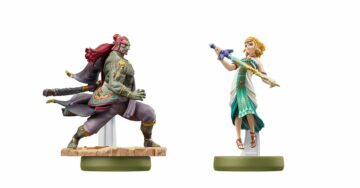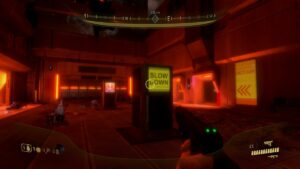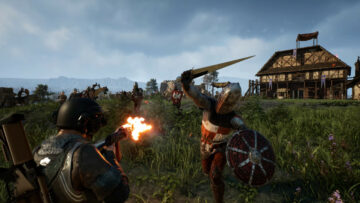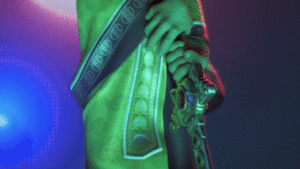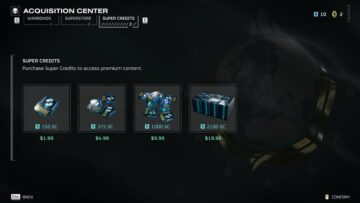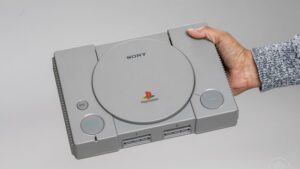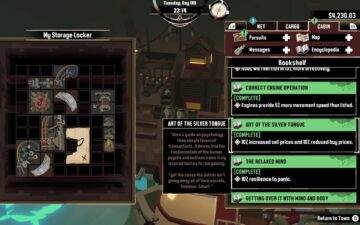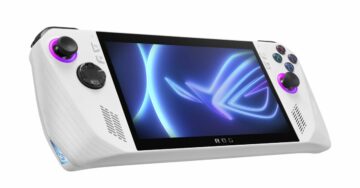Learning a fighting game can be like learning how to play an instrument. You need to appreciate the basics first: how to hold it, where to lay your fingers, and what it can do. With practice, you’ll learn chords and melodies, developing skills that will help you achieve any sound you want. Fighting games, especially when played at a high level, require a commensurate amount of dedication. You spend dozens of hours learning your combos, how to work with the space between you and your opponent, and how to punish a rival fighter for a mistake.
Street Fighter 6 is no different. It’s a wild conjunction of complex systems and mechanics that may leave you perplexed the first time you sit down to play it. After 35 years of Street Fighter games, you may be familiar with the basics. But a new addition to the series, the Drive system, adds a unique bar that lets you parry, perform powerful moves, or make special attacks even deadlier, introducing a daunting layer of depth.
On the other hand, you can play Street Fighter 6 casually, mashing buttons and beating up your friends; you’ll have a blast. Delve deeper than the surface, however, and you’ll be rewarded.
Street Fighter 6 developer Capcom has gone to great lengths to give players the tools they need to be better. World Tour, a brand-new single-player mode that lets you create your own fighter, level them up, and unlock moves while exploring different parts of the world, is a remarkable tutorial disguised as a story mode.
World Tour starts you with just the basics, and a master to guide you on your path. They’ll send you on missions and quests across the semi-open world of Metro City, as you meet new characters, buy fancy clothes, and battle anyone and everyone in your way. No one is safe: mimes, old ladies, punks wearing cardboard boxes on their heads for some reason. World Tour is part tutorial, part comedy adventure, with battles that get progressively harder.
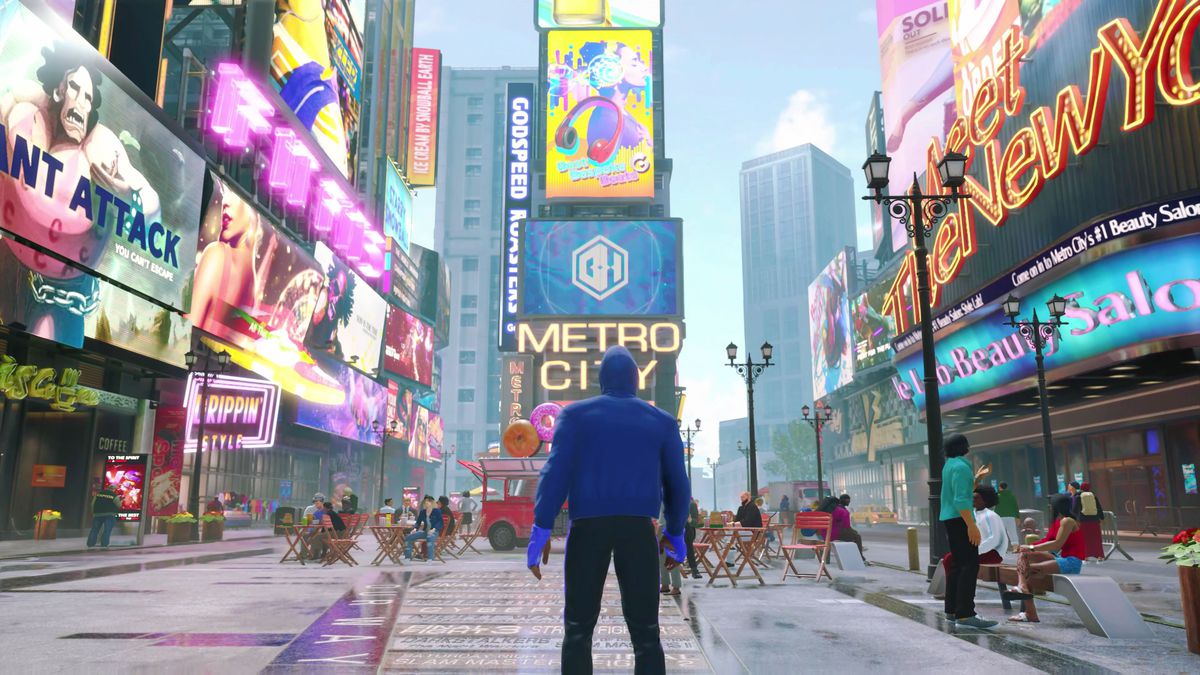
What makes World Tour so brilliant is how few tools you’re given at first — punches, kicks, and maybe a projectile and an uppercut. You learn them until they become a part of you, not just through street fighting, but also through amusing minigames, like one about making pizzas that stealthily teaches you Street Fighter’s standard motion inputs. Secondary missions and challenges are pretty bare-bones, asking you to defeat rivals with specific attacks or moves, but they reinforce the idea of learning, rewarding you without the frustration of getting stomped by other players online. Other fighting games just throw you to the wolves and hope you figure it out.
World Tour doesn’t come without its caveats. Many locations are bland dioramas with set backgrounds, dialogue is often cheesy (to say the least), exploration is pretty limited, and the overall story isn’t all that interesting. But this is the first time in the Street Fighter series that you can find a complete, 20-hour campaign willing to entertain you while also teaching the fundamentals of its elaborate combat system.
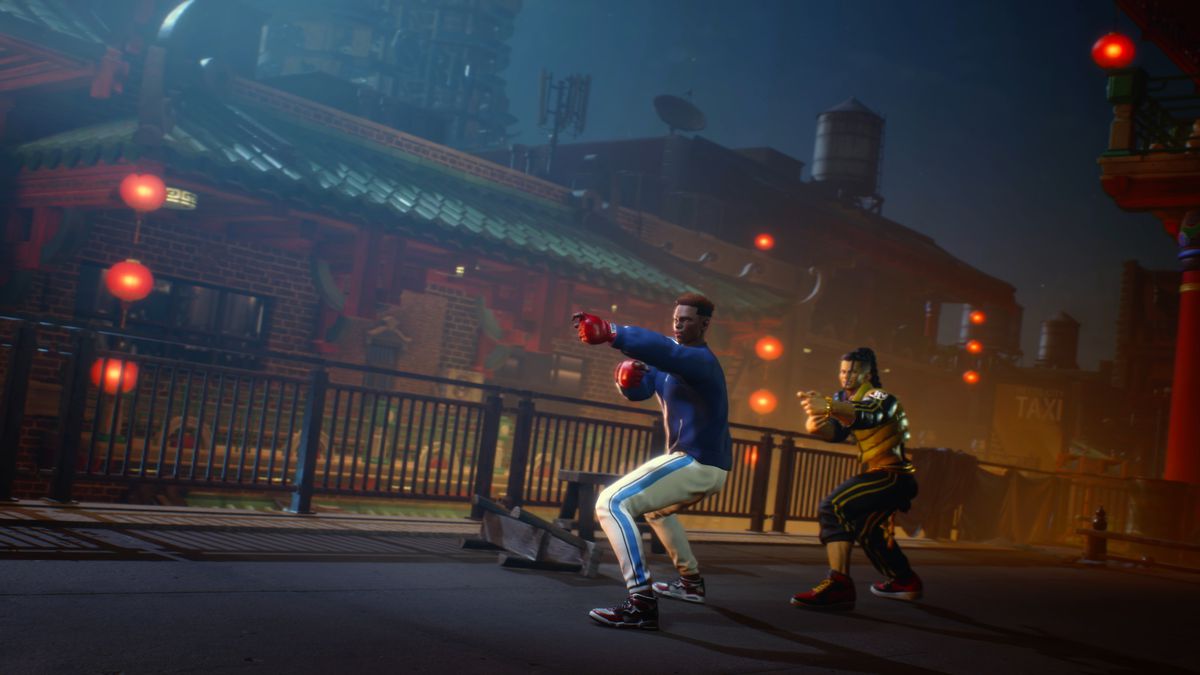
Beyond World Tour mode, Street Fighter 6 offers a wide variety of offline and online modes where you can test what you’ve learned so far, to keep making progress in an endless journey of perfecting your instrument. A robust training mode, trials, individualized character guides with useful tutorials, and even the option to watch friends and strangers play, while checking their frame data in real time, are invaluable.
Battle Hub serves as a new social area where you’ll meet other players and sit at arcade cabinets, waiting for your turn to fight. Groups of weird-looking avatars gather around arcade cabinets, all trying to take out a player that keeps winning, in a scene that reminded me of the glory days of fighting games at arcades. It can take a minute to unpack all the available options, and some aspects, like how to change your control scheme, could be presented in a more intuitive way. But the hub reminds me of Sony’s now-shuttered PlayStation Home, meaning that in the kindest way possible, with its charming presentation and limited but joyful ways of interacting with other people.
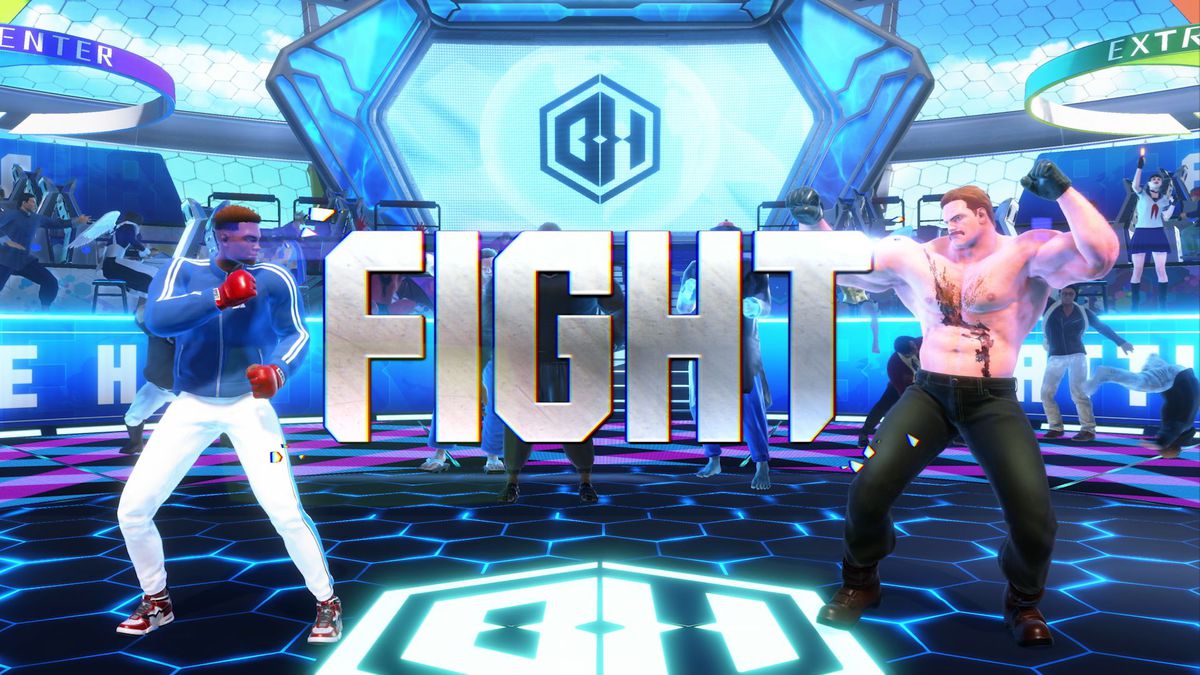
Online matches feel smooth, even when playing against players in other countries, based on my experiences with the game’s beta tests and a limited window during the review period. It’s quick and easy to get into a match. More importantly, rematches can happen in just a few seconds, an improvement that will keep you asking for “just one more fight.”
Street Fighter 6 goes a step further in welcoming new players by rethinking the basic controls. As an alternative to Street Fighter’s long-established six-button control scheme, Capcom introduces new, streamlined Modern and Dynamic control schemes.
Modern controls effectively reduce the six-button layout to three, plus one dedicated “special” button. There’s also an “assist” button that will help you perform a combo that can end with a super move without breaking a sweat. Simple, yes, but you’ll lose an important number of options and strategic resources for your fighter.
With these streamlined controls, new players can learn their characters and enjoy the feeling of battles without needing the dexterity to perform a double quarter circle forward or dragon punch move. When you start a new fighting game, it’s far more important to learn about spacing, footsies, situations in which you can punish your opponent, and other elemental aspects than learning long combos or difficult inputs.
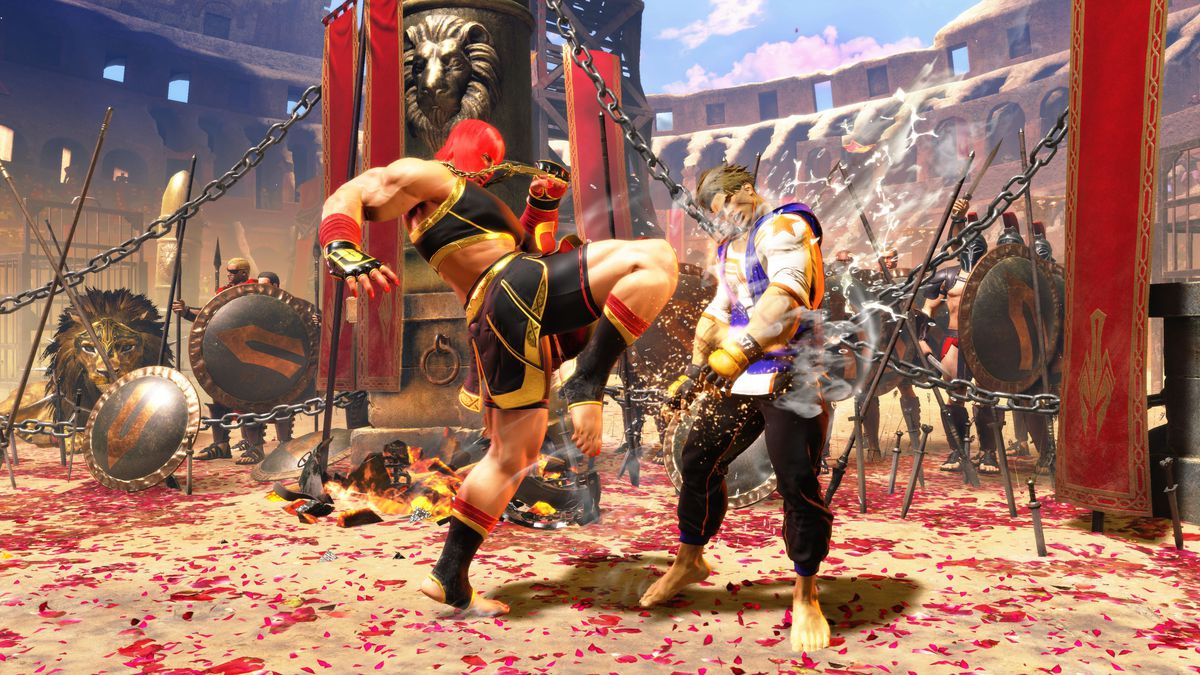
The Dynamic scheme, on the other hand, is designed for players who just want to have a good time. Press any attack buttons, no matter the distance or the button itself, and the game will do the rest for you. This contradicts the idea of making you better in the long run, but it’s ideal for those who want to play a few quick and dirty matches at a party. (Dynamic controls are only available in offline battles.)
None of these features would matter without having a good cast of playable characters, and Capcom knows it. At launch, there are 18 unique fighters that look and play distinctively, with a roster of new and familiar faces that’s easily the strongest lineup since Street Fighter 3: 3rd Strike.
Highlights include JP, a glamorous old Russian man that attacks with unnerving tricks and grabs from long distances; Marisa, a Roman juggernaut with intimidating armored attacks and chargeable punches that threaten to break her opponents’ bones; and Manon, a beautiful French dancer with a surprising balance between long-range kicks and powerful grabs. Classic fighters like Chun-Li, Blanka, Zangief, and E. Honda round out the roster with some of their strongest designs ever, and each has been armed with a deep roster of moves, combos, and specials.
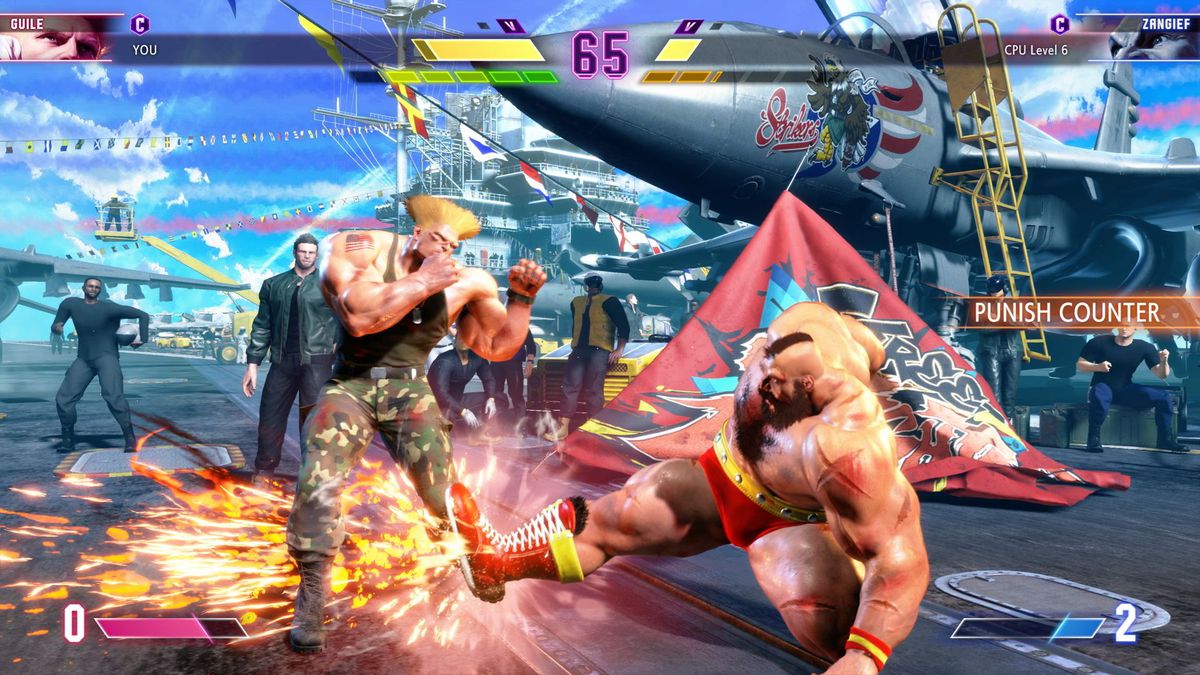
Everything in Street Fighter 6 looks and sounds incredible, from the characters’ breathtaking animations while performing even the most basic of moves to their amusing gestures in the versus screen to the styling of the menus and the hip-hop tunes that play during battles.
Street Fighter 6’s developers went all-in, delivering spectacle and approachability, robust tools and tutorials, all without limiting the game’s potential. You’ll find a deeply layered combat system that doesn’t limit player expression; instead of trying to make things simpler by reducing character moves and options, you’re given an abundance, all of it correctly explained and presented, encouraging your own discoveries.
In an age of an overwhelming quantity of content in every type of media, it sounds almost ridiculous to suggest someone spend a good chunk of their time with a fighting game, laboring over it for weeks, months, or even years. But for players willing to give it a go, learning how to create your own music, in the form of digital street fights, can be as satisfactory and rewarding as few things in life are. Street Fighter 6 is the biggest and most approachable package in the franchise to date, waiting for you with open, gentle arms.
Street Fighter 6 will be released on June 2 on PlayStation 4, PlayStation 5, Windows PC, and Xbox Series X. The game was reviewed on PS5 using a pre-release download code provided by Capcom. Vox Media has affiliate partnerships. These do not influence editorial content, though Vox Media may earn commissions for products purchased via affiliate links. You can find additional information about Polygon’s ethics policy here.
- SEO Powered Content & PR Distribution. Get Amplified Today.
- PlatoAiStream. Web3 Data Intelligence. Knowledge Amplified. Access Here.
- Minting the Future w Adryenn Ashley. Access Here.
- Buy and Sell Shares in PRE-IPO Companies with PREIPO®. Access Here.
- Source: https://www.polygon.com/reviews/23739302/street-fighter-6-review-release-date-characters-ps5-xbox-pc
- 1
- 220
- 28
- 3rd
- 7
- 8
- 9
- a
- About
- abundance
- achieve
- across
- ADDITION
- adds
- Adventure
- Affiliate
- after
- Against
- age
- Aircraft
- All
- also
- alternative
- amount
- an
- and
- animations
- any
- anyone
- appreciate
- Arcade
- arcades
- ARE
- AREA
- armed
- arms
- around
- as
- aspects
- At
- available
- avatar
- avatars
- backgrounds
- balance
- bar
- based
- Basics
- Battle
- BE
- beautiful
- become
- been
- BEST
- beta
- Better
- between
- Biggest
- BLAST
- bones
- break
- Breaking
- breathtaking
- but
- button
- buy
- by
- Campaign
- CAN
- Capcom
- challenges
- change
- character
- characters
- checking
- Circle
- City
- Classic
- code
- combat
- come
- Comedy
- commissions
- complete
- complex
- content
- Control
- controls
- correctly
- could
- countries
- cover
- create
- data
- date
- days
- dedicated
- dedication
- deep
- deeper
- delivering
- depth
- designed
- designs
- Developer
- developers
- developing
- dialogue
- different
- difficult
- digital
- distance
- do
- double
- down
- download
- dozens
- Dragon
- drive
- During
- dynamic
- e
- each
- Earn
- easily
- easy
- Editorial
- effectively
- Elaborate
- encouraging
- end
- Endless
- enjoy
- entertain
- especially
- ethics
- even
- EVER
- Every
- everyone
- Experiences
- explained
- exploration
- Exploring
- expression
- Face
- faces
- familiar
- far
- Features
- feel
- few
- fight
- Fighting
- Fighting game
- Fighting Games
- fights
- Figure
- Final
- find
- First
- first time
- For
- form
- Forward
- Frame
- Franchise
- French
- Friends
- from
- frustration
- Fundamentals
- further
- game
- Games
- Gaming
- gather
- Get
- getting
- give
- given
- go
- goes
- gone
- good
- great
- guide
- Guides
- hand
- has
- Have
- having
- heads
- help
- her
- High
- his
- hold
- Home
- honda
- hope
- hours
- How
- How To
- however
- http
- HTTPS
- hub
- idea
- important
- importantly
- improvement
- in
- include
- incredible
- influence
- information
- inputs
- instead
- interacting
- interesting
- intimidating
- into
- Introduces
- intuitive
- invaluable
- Is
- IT
- ITS
- itself
- journey
- jpg
- june
- just
- keep
- kick
- launch
- lay
- layer
- layout
- LEARN
- learned
- learning
- least
- leave
- Level
- Life
- like
- LIMIT
- Limited
- links
- locations
- Long
- Look
- looks
- lose
- make
- MAKES
- Making
- man
- many
- master
- Match
- matches
- matter
- May
- meaning
- Mechanics
- Media
- meet
- Metro
- mike
- minute
- missions
- mode
- Modern
- modes
- months
- more
- most
- move
- Music
- my
- need
- New
- Newsletter
- no
- not
- notes
- number
- of
- Offers
- offline
- often
- Old
- on
- One
- online
- only
- open
- Option
- Options
- or
- Other
- out
- over
- own
- package
- part
- partnerships
- parts
- Party
- Patch
- patch notes
- path
- PC
- People
- perfecting
- perform
- performing
- period
- plato
- plato data intelligence
- platodata
- platogaming
- play
- played
- player
- players
- Playing
- playstation
- Plus
- policy
- Polygon
- possible
- potential
- powerful
- practice
- presentation
- presented
- press
- pretty
- Products
- Progress
- progressively
- provided
- ps5
- punch
- purchased
- quantity
- quarter
- quests
- quick
- Ready
- Real
- reason
- reduce
- reducing
- reinforce
- released
- remarkable
- require
- residents
- Resources
- REST
- review
- rewarding
- Rival
- rivals
- robust
- roster
- round
- roundup
- Run
- Russian
- safe
- Satisfactory
- say
- scene
- scheme
- Screen
- secondary
- send
- Series
- serves
- set
- sign
- Simple
- since
- single-player
- Sit
- situations
- skills
- So
- so Far
- Social
- some
- someone
- sound
- Space
- special
- specials
- specific
- spend
- Stage
- standard
- Star
- start
- step
- Story
- Strategic
- streamlined
- street
- Street Fighter
- street fighter 6
- suggest
- super
- Surface
- surprising
- system
- Systems
- Take
- Teaching
- test
- tests
- than
- that
- The
- The Basics
- The Game
- the world
- their
- Them
- there
- These
- they
- things
- this
- those
- though
- threaten
- three
- Through
- time
- times
- to
- tools
- totally
- Training
- trains
- trials
- tunes
- turn
- tutorial
- tutorials
- two
- type
- ultimate
- unique
- unlock
- until
- up
- using
- variety
- Versus
- via
- W3
- waiting
- want
- was
- Watch
- way
- ways
- weekly
- weeks
- welcoming
- went
- What
- when
- where
- while
- WHO
- wide
- wild
- will
- willing
- winning
- with
- without
- wolves
- Work
- world
- would
- XML
- years
- yes
- you
- your
- zephyrnet

